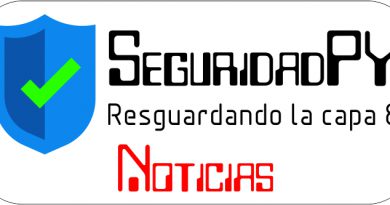AttackGen: genera escenarios de respuesta a incidentes usando LLMs
El framework MITRE ATT&CK es una herramienta poderosa para comprender las tácticas, técnicas y procedimientos (TTP) utilizados por los diversos actores; sin embargo, puede resultar difícil traducir esta información en escenarios realistas para realizar pruebas.
AttackGen resuelve este problema mediante el uso de grandes modelos de lenguaje (LLM) para generar rápidamente escenarios de ataque basados en una selección de técnicas conocidas de un grupo seleccionado por el usuario y los detalles de su organización.
Su uso es tremendamente simple. Introducimos la key de la API de OpenAI y seleccionamos la industria y el tamaño de la organización contra la que simularemos el ataque:
Posteriormente vamos a Threat Group Scenarios o Custom Scenarios y veremos una completa lista de actores con sus TTPs asociadas. En el ejemplo seleccionamos APT41:
Y al darle al botón de generar escenario obtendremos automáticamente la simulación. Vemos unos pocos ejemplos:
Incident Response Testing Scenario: APT41 Targeting Aerospace/Defense Small Company
Scenario Overview:
Key Objectives:
- Evaluate the company’s ability to detect and respond to various stages of the APT41 kill chain.
- Assess the effectiveness of the incident response team in containing and mitigating the attack.
- Test the coordination and communication among internal teams during a simulated cyber incident.
Incident Response Testing Steps:
- Resource Development (T1588.002)
- Simulate a scenario where the threat actor crafts a malicious tool to be used in the attack.
- Monitor for any suspicious tool development activities on internal systems.
- Initial Access (T1566.001)
- Send simulated spear-phishing emails with malicious attachments to employees.
- Evaluate the company’s email security controls and the ability to detect phishing attempts.
- Execution (T1059.001)
- Run a PowerShell script within the environment to simulate code execution.
- Monitor for unusual PowerShell activities and command executions.
- Persistence (T1133)
- Establish external remote services for persistent access.
- Detect and investigate any unauthorized external access attempts.
- Privilege Escalation (T1546.008)
- Exploit accessibility features to escalate privileges.
- Monitor for suspicious changes in user privileges and access rights.
- Defense Evasion (T1027)
- Obfuscate files or information to bypass detection.
- Evaluate the effectiveness of endpoint security solutions in detecting obfuscated files.
- Credential Access (T1003.001)
- Attempt to extract credentials from LSASS memory.
- Monitor for any suspicious activities related to credential theft.
- Discovery (T1135)
- Conduct network share discovery to identify critical assets.
- Detect and investigate unauthorized network share access.
- Lateral Movement (T1021.001)
- Use Remote Desktop Protocol for lateral movement.
- Detect and block suspicious RDP connections between internal systems.
- Collection (T1560.003)
- Archive data using a custom method for exfiltration.
- Monitor for large data transfers or unusual archiving activities.
- Command and Control (T1008)
- Establish fallback communication channels for remote control.
- Detect and block any unusual network traffic patterns.
- Exfiltration (T1567)
- Attempt to exfiltrate data over web services.
- Monitor outbound network traffic for potential data exfiltration attempts.
- Impact (T1486)
- Encrypt data for impact within the environment.
- Assess the speed and effectiveness of incident response in mitigating data encryption.
Conclusion:
Incident Response Testing Scenario: Turla targeting Finance/Banking Company
Background:
Threat Actor:
- Resource Development: Malware (T1587.001)
- Initial Access: Spearphishing Link (T1566.002)
- Execution: Native API (T1106)
- Persistence: Winlogon Helper DLLIncident Response Testing Scenario:
- (T1547.004)
- Privilege Escalation: Windows Management Instrumentation Event Subscription (T1546.003)
- Defense Evasion: Modify Registry (T1112)
- Credential Access: Brute Force (T1110)
- Discovery: Remote System Discovery (T1018)
- Lateral Movement: SMB/Windows Admin Shares (T1021.002)
- Collection: Data from Information Repositories (T1213)
- Command and Control: Internal Proxy (T1090.001)
- Exfiltration: Exfiltration to Cloud Storage (T1567.002)
Objective:
Scenario:
- The scenario begins with a simulated spearphishing email containing a malicious link, leading to the execution of malware leveraging native APIs.
- The malware establishes persistence through the use of Winlogon Helper DLL and escalates privileges using Windows Management Instrumentation Event Subscription.
- The incident response team is alerted to suspicious activities, such as modifications to the registry, attempted brute force attacks for credential access, and remote system discovery.
- The team must analyse network logs, endpoint data, and system artefacts to identify indicators of compromise (IoCs) associated with the attack.
- Upon confirming the presence of the threat actor, the team must contain the incident by isolating affected systems and disabling lateral movement through SMB/Windows Admin Shares.
- The team proceeds with the eradication process by removing malicious files, disabling persistence mechanisms, and revoking compromised credentials.
- The incident response team initiates the recovery phase by restoring affected systems from clean backups and implementing security patches to prevent future attacks.
- Post-incident activities include conducting a lessons learned session, updating incident response procedures based on findings, and improving security awareness training for employees.
Evaluation Criteria:
- Response Time: Assess how quickly the incident response team detects, responds, and mitigates the attack.
- Communication: Evaluate the effectiveness of internal and external communication during the incident response process.
- Technical Proficiency: Measure the team’s technical skills in analysing IoCs, containing the incident, and eradicating threats.
- Documentation: Review the documentation of the incident response process, including evidence collection and remediation steps.
Conclusion:
Incident Response Testing Scenario: Carbanak targeting IT Company
Overview
Threat Actor Information
- Resource Development: Tool (T1588.002)
- Persistence: Windows Service (T1543.003)
- Defense Evasion: Match Legitimate Name or Location (T1036.005)
- Command and Control: Bidirectional Communication (T1102.002)
Incident Response Testing Objectives
- Evaluate the company’s ability to detect and respond to a simulated cyber attack conducted by the Carbanak threat actor group.
- Test the effectiveness of the incident response procedures, including communication, coordination, and decision-making during a cyber incident.
- Identify any gaps or weaknesses in the incident response plan and improve the company’s overall cybersecurity posture.
Scenario Details
- Scenario Type: Tabletop Exercise
- Scenario Date: [To be determined]
- Scenario Participants:
- Incident Response Team
- IT Security Team
- IT Operations Team
- Legal Team
- Communications Team
- External Cybersecurity Consultant (Facilitator)
- Scenario Steps:
- Preparation Phase:
- Provide background information on Carbanak threat actor group and their kill chain tactics.
- Review the company’s incident response plan and procedures.
- Simulation Phase:
- Resource Development Stage: Simulate the deployment of a malicious tool (T1588.002) within the company’s network.
- Persistence Stage: Simulate the establishment of persistence using a Windows service (T1543.003).
- Defense Evasion Stage:Simulate the use of tactics to match legitimate names or locations (T1036.005) to evade detection.
- Command and Control Stage: Simulate the establishment of bidirectional communication (T1102.002) with external malicious entities.
- Response Phase:
- Participants respond to each stage of the attack as it unfolds.
- Activate the incident response plahttps://github.com/mrwadams/attackgenn and follow predefined procedures.
- Coordinate with relevant teams to contain the attack, mitigate impact, and restore normal operations.
- Debriefing Phase:
- Conduct a debriefing session to discuss the response actions taken, challenges faced, and lessons learned.
- Identify areas for improvement in incident response procedures and cybersecurity defences.
Conclusion
Powered by WPeMatico




